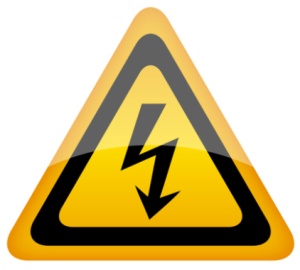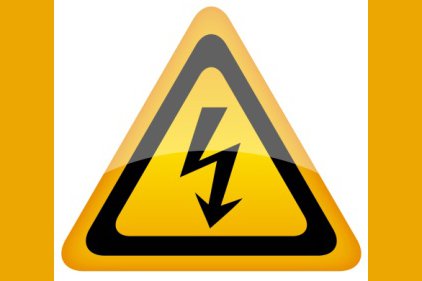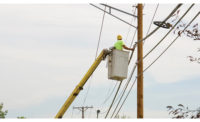 You would think if workers knew how little electricity it takes to kill someone, they would be more cautious around energized equipment and other electrical hazards.
You would think if workers knew how little electricity it takes to kill someone, they would be more cautious around energized equipment and other electrical hazards.
But among most electrical workers there exists the old “it can’t happen to me” attitude of complacency.
They simply do not see themselves at risk of injury of death when working on energized equipment. Their work habits, developed over years and reinforced by the apathy of supervisors and co-workers, become slack. Shortcuts are taken every day, and if there are no consequences, workers lose that critical perception of risk.
Plus there is a bit of ego involved. Many maintenance workers take pride in being able to repair anything, anytime, anywhere, regardless of the dangers of the electrical work.
The safety culture of many organizations doesn’t help. As with other hazards, electrical hazards are often largely ignored until a catastrophic incident occurs. Then the organization tries to recover by embracing risk assessments and planning every job.
Other reasons exist for complacency about electrical hazards. The math favors the risk-takers: about three million craft workers, machine operators, laborers and other workers service equipment and face the greatest risk of injury or death from energized equipment.
According to the Bureau of Labor Statistics, every year 150-300 workers die of electrical injuries, and up to 4,000 are injured. But out of three million workers exposed to electrical hazards, that toll, tragic as it is, may make workers taking chances around electricity think that the odds are in their favor of nothing happening.
Workers should know that when “something does happen” and a worker is injured on the job from exposure to hazardous energy, the injury tends to be severe and costly. Workers injured on the job from exposure to hazardous energy lose an average of 24 workdays for recuperation, according to the Bureau of Labor Statistic. That’s more than one month’s time out of work.
And workers should also know that compliance with OSHA’s lockout/tagout standard (1910.147) prevents an estimated 120 fatalities and 50,000 injuries each year, according to OSHA.
But again, a culture of complacency regarding compliance exists in too many workplaces. It was announced in October, 2013 that three of the top ten most-cited OSHA standards for fiscal year 2013 related to electrical work (see chart below):
Standard Total Violations
1. 1926.501 – Fall Protection 8,241
2. 1910.1200 – Hazard Communication 6,156
3. 1926.451 – Scaffolding 5,423
4. 1910.134 – Respiratory Protection 3,879
5. 1910.305 – Electrical, Wiring Methods 3,452
6. 1910.178 – Powered Industrial Trucks 3,340
7. 1926.1053 – Ladders 3,311
8. 1910.147 – Lockout/Tagout 3,254
9. 1910.303 – Electrical, General Requirements 2,745
10. 1910.212 – Machine Guarding 2,701
Dealing with complacency
Safety pros have many tools and approaches for dealing with complacency. They can give workers the facts:
● According to the Bureau of Labor Statistics, 289 employees were killed by contact with electric current in 2002. This equates to more than one work-related death every work day in America. Note: That number of fatalities dropped to 156 in 2012, according to the BLS.
● More than half of the workers killed in electrical incidents do not come from traditional electrical jobs, but rather are in related fields such as painters, drivers, and laborers.
● OSHA fined employers more than $26 million for electrical standards violations in 2011.
● Current through the body, even at levels as low as 3 milliamperes, can also cause injuries of an indirect or secondary nature in which involuntary muscular reaction from the electric shock can cause bruises, bone fractures and even death resulting from collisions or falls (i.e. fall from a ladder after receiving a small shock), according to NIOSH.
● It doesn’t take much for human skin to burn – in fact an exposure of 203 F for just one-tenth of a second (6 cycles) is enough to cause a third degree burn, according to NIOSH.
● Be very careful when shipping, handling, installing or maintaining explosion-proof equipment. Even slight damage to a flame path can permit burning gases to escape, igniting the surrounding atmosphere, according to OSHA.
● Contact with 20 milliamps of current can be fatal. As a frame of reference, a common household circuit breaker may be rated at 15, 20, or 30 amps, according to OSHA.
●In reality, the current drawn by a tiny 7.5 watt, 120-volt lamp, passed from hand to hand or hand to foot across the chest is sufficient to cause electrocution, according to OSHA.
Safety pros can often be inventive in shaking workers out of their complacency. Here’s what one pro, Rich Keyworth, reported doing:
“We were notified of a new high rise office building going to be built in our community. As the senior Inspector I was assigned the project from caisson to completion. During construction the glazers were preparing to hang the aluminum channel which would hold the exterior granite slabs and the windows. As I came up on the deck I noticed the workers holding onto the perimeter cable with one hand and installing bolts with the other hand. When I asked where their safety belts were, they replied, “We are professionals, we don’t need no sissy belts!”
| "Then when your wife and kids apply for your benefits, I will appear against them to deny them any benefits." |
“I thought for a moment and asked who the foreman was, and one of the loud mouths walked up and announced he was the foreman. I opened up my clip board to a blank piece of paper. I then asked him for his driver’s license and copied all of the information off of his license including height, weight, color hair and eyes, and date of birth. I then asked if he was married and he replied ‘yeah, so what?’
“I proceeded on and asked for his wife’s, name and address. By now he was totally exasperated. I continued on and asked if he had any kids and their names and ages.
“After he gave me the information I requested he asked me if I was going to arrest him and I replied no. ‘But what I am going to do is when you fall off the building and kill yourself, my medics will not have to fish through your guts to find out who you were. I will also inform the coroner of your information. Then when your wife and kids apply for your benefits, I will appear against them to deny them any benefits. I see no reason for them to get any benefits, because you didn’t have the brains to wear a safety belt. ‘
“Suddenly the whole crew is looking down over the edge and looked at me and found a few adjectives to describe me and then they all walked off the job. Two days later I was back on the jobsite and when I arrived on deck every man had a new belt, new safety strap, new safety shoes, new hard hats -- every item was brand new and they were wearing them. They told me, ‘We got all new gear and the foreman said ‘We are wearing it’.’ From that point on the entire construction staff was wearing and using all of their safety equipment.
A manner they could relate to
“About a week later, I received a call from the president of the glazing company. He was rather irate that I had cost him a fortune in new safety equipment. I replied back they are all wearing it now, too. When he asked how I got them to wear their equipment and develop new attitudes towards safety, I replied ‘I talked to them in a manner they could relate to.’
The entire project was completed with NO lost time accidents.



